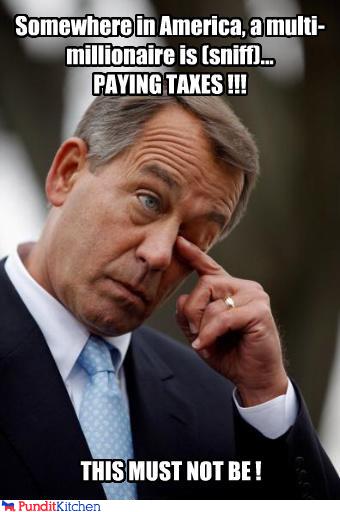I’m going to write about taxes. Probably not the smartest move if I want to attract more readers (which I do), but I’ve got two things going for me. First: I’ll shamelessly target nostalgia with some gratuitous Hardy Boys references. Secondly, I’m betting that a lot of people are as tired of hearing bumper-sticker political arguments as I am. Topics like marginal vs. average tax rates or statutory vs. effective taxation might not sound thrilling, but you know what’s even less thrilling? Listening to your relative tell you that he’s going to “go Galt” if he has to keep supporting that slacker 47%. Or maybe hearing your high school buddy argue that it’s criminal for corporations to get out of paying their fair share of taxes. (If you don’t know why one or both of those is stupid, just keep reading. Soon you will.)

I was prompted to write this blog when a friend posed a challenge on Facebook today: “Your task: provide compelling reasons NOT to tax the super wealthy at a higher rate. GO!” I took him up on the challenge, sort of, but within a few comments I realized the bigger issue was helping folks get a handle on what’s actually going on with our tax system. It’s our responsibility as citizens in a democracy to know what’s going on in order to make informed opinions. It doesn’t mean we’ll agree, of course, but if the debates are centered on reality they have a tendency to be more productive and less divisive. So, here goes nothing…
Marginal vs. Average Tax Rates
The US income tax system is broken up into brackets. People tend to be really confused about this, because they think that if you make so much money that you cross from one bracket into the other, that all of your money will be taxed at the higher rate. (I used to think that, too.) That’s not how it works, and I’m going to use the Hardy Boys as an example.

Frank and Tom are both single, so they’re both looking at the same set of brackets. Let’s say that you pay 10% of the first $25,000 that you make, and then 20% of the next $25,000, and then 40% of everything you make after that. In the year 1927 (when Leslie McFarlane wrote the first Hardy Boys book The Tower Treasure), Frank hauled in $50,000 and his brother Tom did OK too with $30,000. Since both of them made more than $25,000 but not more than $50,000, they are both in that 20% tax bracket. That’s their marginal rate. But how much do they really pay in taxes?
Frank pays 10% of his first $25,000 (that’s $2,500) and 20% of his next $25,000 (that’s $5,000) for a total of $7,500 in taxes. Since he made $50,000, his average tax rate is 15% ($7,500 / $50,000).
Tom also pays 10% of his first $25,000 (that’s still $2,500) and 20% of the next $5,000 he made (so that’s $1,000) for a total of $3,500. Since he made $30,000, his average tax rate is about 11.67% ($3,500 / $30,000).
So even though both Frank and Tom are in the same tax bracket and paid a 20% rate on the last dollar they made (that’s the marginal rate), their average rate is lower, and it’s not even the same!
Here’s why this is really important, a lot of people think that if you are near the edge of a tax bracket you will just stop working to avoid going over the brink. For example, if Frank (who made $50,000) had a chance to make $1 more he would be in the 40% bracket. That sounds scary, because people think he’d have to pay 40% on everything he made. That would make his bill go to $50,001 X 40% = $20,000. So he’d earn one more $1, but getting into that higher bracket would make him earn much less money. Let me emphasize again, that’s not how it works.
In reality, if Frank earned another dollar, he’d only pay 40% taxes on that dollar. So his taxes would go from $7,500 to $7,500.40. They’d go up, sure, but they went up by $0.40 and he earned an extra $1.00. This doesn’t mean that tax brackets don’t matter, however.
Let’s say that Frank and Tom both have a chance to make another $10,000. Since Frank would be moving into that 40% tax bracket, the job is only worthy $6,000 to him (because he has to give back $4,000 of the new job in taxes). He has to give the rest up in taxes. But since Tom made less than Frank, he’d have to pay 20% on that job, so it’s worth $8,000 to him (he only has to give back $2,000 of the salary in new taxes).

So now you know the difference between marginal and average tax rates. Average is really much more important, but marginal does matter. Something else you can notice, is that your belief about how much we should tax the rich depends a lot on how much you think their work is worth to society. If you follow textbook economics, then a person’s salary depends at least partially on the value of their efforts: a brain surgeon makes $400,000 a year because his skills are very rare and useful. In that case, you don’t want to have high marginal rates (high rates on the rich), because you want brain surgeons working as much as possible. If, on the other hand, you think that everyone on Wall Street is a crook, then you really don’t care how much they work, and so you think that taxing them more is a great idea. So attitudes about how people get wealthy and what wealthy people do can have a big impact on what you think about tax rates.
This actually has nothing to do with the Hardy Boys, by the way, so if you were waiting for me to tie that back in I’m sorry, but I have to disappoint you. Worth noting, however, that according to some critics the Hardy Boys changed in two ways in more modern times. The first is obviously good: starting in 1959 the books were revised to get rid of racist stereotypes. On the other hand, they were also revised to make the Hardy Boys more respectful of law and authority and more affluent. This sort of mirrors changes in our society since the 1950s as well: we’ve made great strides in tolerance and equality for minorities, but the share of money going to the rich has also increased dramatically. So hey, maybe I tied that in a little bit after all.
We’ll talk about statutory vs. effective taxation tomorrow.
I feel a little dumb that I had forgotten about the above, and I am looking forward to your next post. I deal with taxes on a different level, one that does not concern itself with tax rates. And my personal taxes are so complicated that we outsourced it to an accountant years ago just to minimize the chance of auditing and error. (Good old self employment and rental income and on and on!) As a bankruptcy paralegal, I focus on different tax details. I look over tax returns to verify and report income in the prior two years, discover “forgotten” investments, dependents, and personal information. I try to exempt future tax refunds from collection alongside other personal possessions and accounts, place owed taxes under “priority” status (meaning most are not dischargeable in bankruptcy), calculate approximate monthly tax expenses for businesses and the self employed budget, and match those projected expenses in the Means Test, which largely determines eligibility for a Chapter 7 vs. 13/11 along with the length of repayment period if applicable. But I don’t do anything with tax rates, and I always enjoy understanding more of the process. Knowledge can only improve my work, even if it is largely irrelevant to my work. Someday, it will be relevant. For example. building, owning, and then doing a rent-to-own contract on our Virginia house has actually contributed greatly to my bankruptcies skills even if there does not appear to be a direct connection. So thank you for the great explanation!
I also appreciate the Hardy Boy reference. My son owns “The Tower Treasure” and the second book in the series, and he is really getting into Hardy Boys now. He has the originals, I believe, so I will try to pay attention to the racist stereotypes. So far, I haven’t had any trouble from him :)
Mind = Blown! I can’t believe that I didn’t know that this is how the tax system works… I am familiar with the concept because eBay (where I sell quite a bit of stuff) has a similar, yet opposite, fee system where you pay 15% on the first $50, 10% on the next $50, 7% on the next $100 and 4% on anything more than those $200. These are not the exact percentages, but you get the picture. Thanks so much for clearing this up!!!